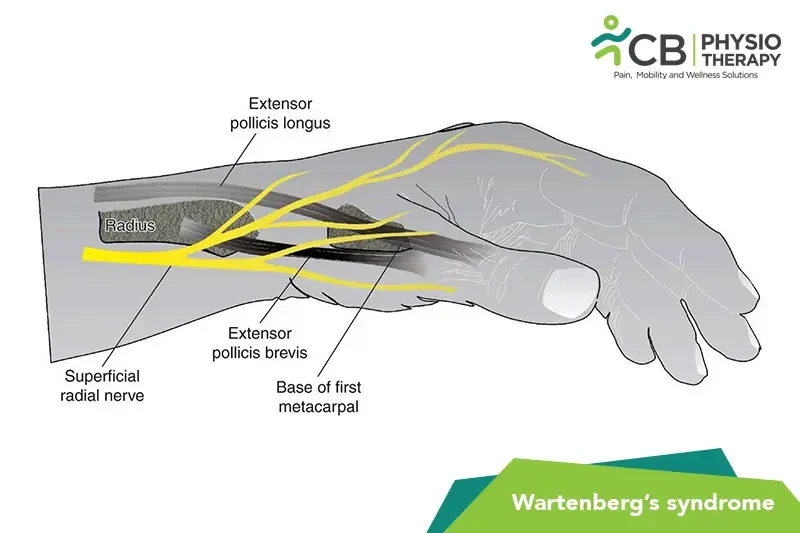Thermotherapy:Thermotherapy or heat therapy can help promote blood flow and tissue healing.
Cryotherapy:Cryotherapy or cold therapy can help reduce inflammation and pain.
Transcutaneous electrical nerve stimulation (TENS): TENS involves the use of a small device that delivers low-voltage electrical current to the affected area via electrodes placed on the skin. TENS can help reduce pain and improve nerve function in patients with Wartenberg’s syndrome.
Ultrasound therapy: Ultrasound therapy involves the use of high-frequency sound waves to stimulate blood flow and promote tissue healing. This modality may be used to reduce inflammation and pain in the affected area.
Electrical muscle stimulation (EMS): EMS involves the use of electrical impulses to stimulate muscle contractions. This modality may be used to help maintain muscle strength and reduce muscle wasting in the affected hand.
Shortwave diathermy: Shortwave diathermy involves the use of high-frequency electromagnetic waves to generate heat in the affected area. This modality may be used to promote tissue healing and reduce pain and inflammation.
Range of motion exercises: Range of motion exercises is designed to improve the flexibility and mobility of the affected hand and wrist. These exercises may include wrist rotations, finger stretches, and grip-strengthening exercises.
Nerve gliding exercises: Nerve gliding exercises involve moving the affected nerve through a range of motion to reduce compression and irritation. These exercises may include wrist extensions, finger extensions, and elbow flexion.
Soft tissue mobilization: Soft tissue mobilization techniques such as massage, myofascial release, and trigger point therapy can help reduce muscle tension and promote tissue healing.
